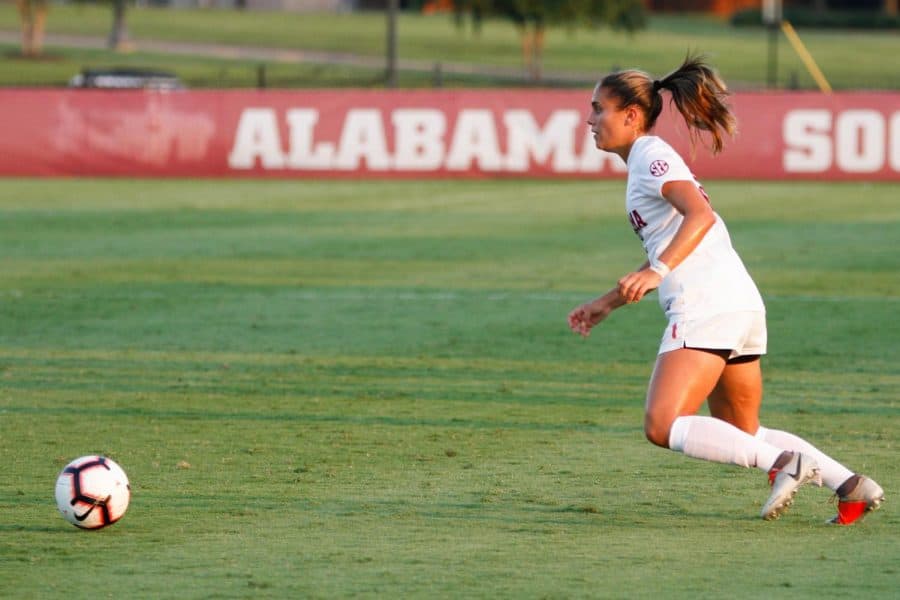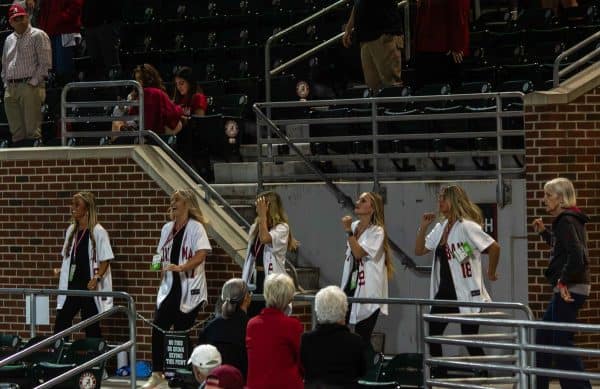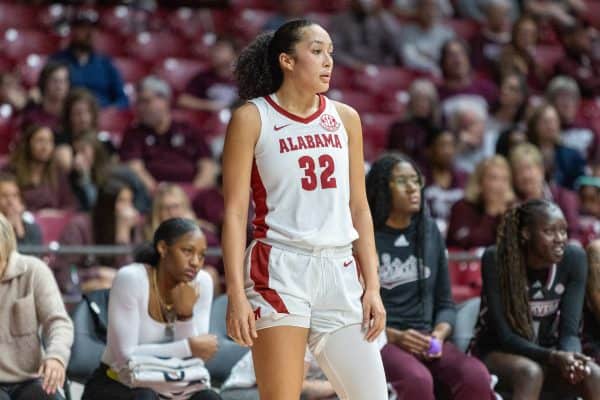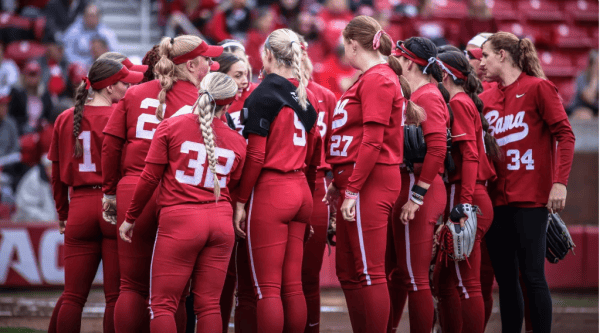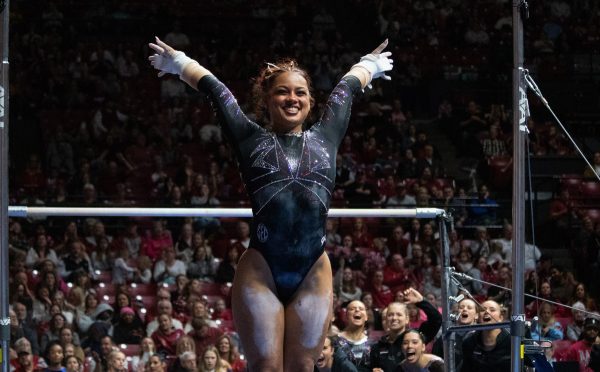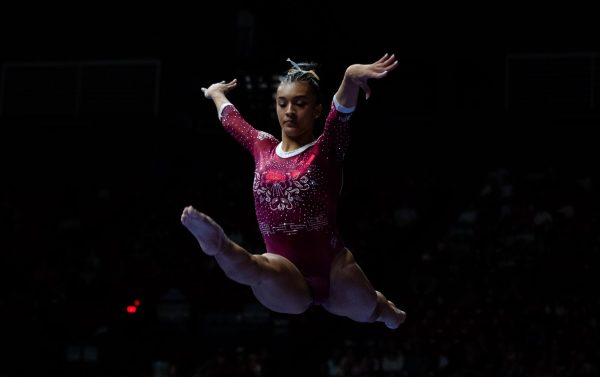Coach Wes Hart implements “total football” tactics in formation
September 6, 2018
The goals are being scored, tackles are being won, and shutouts are beginning to mount for the Crimson Tide. Alabama, currently on a three-game winning streak, seems to be capturing form in the midst of its seven-game home stand. After an uneasy start to the season on the road in Texas and a disappointing mistake-filled loss at home to Florida Gulf Coast, the Crimson Tide has found a bit of stability.
Many factors go into a team finding success. An assurance of passing, increased support from the fans, or the occasional lucky bounce can go a long way for a team building its confidence, but ultimately, a belief in the system the coach is implementing and an understanding of the tactics he is pressing makes the biggest difference. Coach Wes Hart seems to have gotten his side bought in on his new set-up and appears poised to keep up the winning ways.
Alabama operates in a three-back system, with four players in the midfield and another line of three in the attack. The formation allows Alabama to throw a lot of numbers forward offensively and play the high-pressure, up-tempo style that Hart adores, but can at times leave the three center backs stranded and susceptible to quick counterattacks when the Crimson Tide lose control of possession.
For this reason, Hart places a great amount of faith on his three central defenders, and with this trust, pushes his team higher and higher up the field, devoting big numbers to the attack, a tactic that has proven widely successful in Alabama’s last three victories, with the Crimson Tide outscoring opponents 12-1 over that stretch.
But it’s not simply the formation that Hart employs that dictates the results Alabama has been recording, but rather the way in which he instructs his players to move that makes this Crimson Tide team so dynamic. Hart believes in “total football,” a tactical theory in soccer made famous by the Netherlands national team in the 1974 World Cup. The premise is that any outfield player can take over the role of any other player on the team. In practice, this is why when the Crimson Tide take the field, you’ll notice Hart’s defenders carry the ball well beyond the midfield and join in on the attack, while midfielders drop back into defense to provide cover. It’s this fluidity of the players coming forward that can cause trouble for opposing defenses.
“A big thing we try to do and I think we’re finally at that point is to have eleven players that are comfortable with the ball, and that includes the goalkeeper,” Hart said. “We want attacking minded players, players that are comfortable with the ball at their feet. By giving players like Nealy [Martin] the freedom to bomb down the wings as much as she does, we need other players to know that someone else needs to fill in for her until she can get back. I certainly want players to feel that they have the freedom to create.”
Playing “total football’ ensures that all players are comfortable in every area of the field, but is reliant on each player in the team and their adaptability to ensure success. Should a team not possess the quality necessary to implement what the system requires, it can often leave teams hopelessly exposed in large areas of the field.
“We looked at the personnel and said that we think we have the group to do this,” Hart said. “This year of course we just have more depth to do it.”
As well as having the proper personnel, Hart said that for this system to be effective, each player must have an extensive understanding of each position and the forethought to be proactive in their decision making and fill in the space required of them. In training, Hart instructs the players on what to look for and what they can take advantage of. The awareness and general reading of the game has been key and comes first, second comes communication between players.
“It’s something that we just train every day,” defender Nealy Martin said. “Once it becomes a habit, it’s easy to carry over into the game. If we have space [Hart] wants us to take it and its okay if we make mistakes in the final third. Getting to the end line and crossing the ball is one of the big things were focusing on this year. Us being able to do that from the back helps our attackers.”
Playing such a dynamic formation is fundamental in Hart’s ideology of managing and can be seen in the way he has developed many of his players. The case is made with talents such as senior midfielder Emma Welch, who had very rarely, if ever, played in a defensive role before and is now being asked to track back multiple times throughout a match.
“Very rarely should [the formation] look like the 3-4-3, that’s just a starting position,” Hart said. “From there we want soccer players to make decisions and go where the game tells them to go, go where the space is. Defensively there are responsibilities, but in the attack, it’s just go where you need to go.”
Alabama seems to have found some comfort in this new system, demonstrating over the course of the season the effectiveness of its setup. The Crimson Tide has displayed its ability to score large numbers of goals at times as well as defend resolutely when called upon – most notably the statement 1-0 victory over Virginia Tech.
With much tougher competition awaiting in the near future, Hart’s newly cemented tactical setup should be tested in the coming weeks as Alabama will enter into SEC play beginning with Ole Miss on Sept. 13. Before that, Alabama will look to continue its success as it faces a pair of Sun Belt conference competition on the weekend, hosting South Alabama on Thursday at 7 p.m. and Troy on Sunday at 1 p.m.

